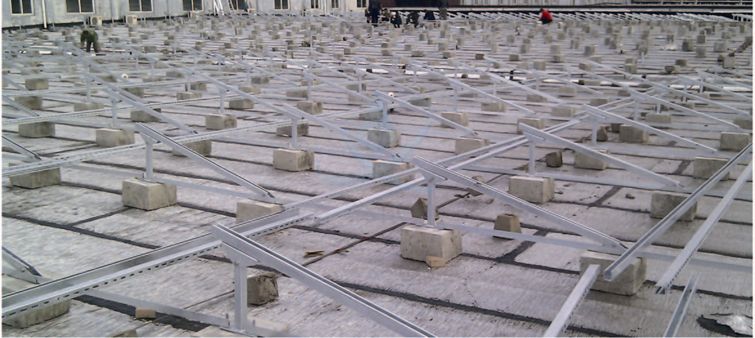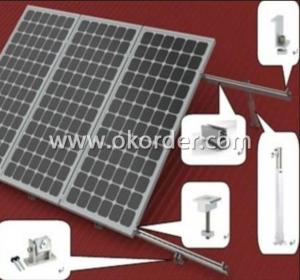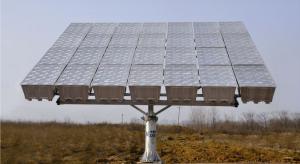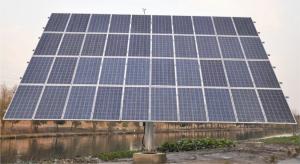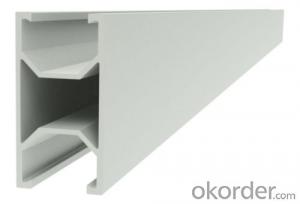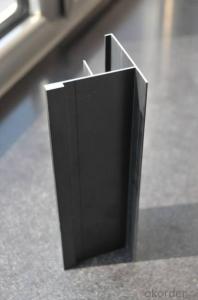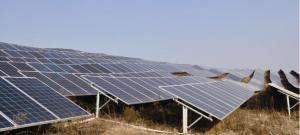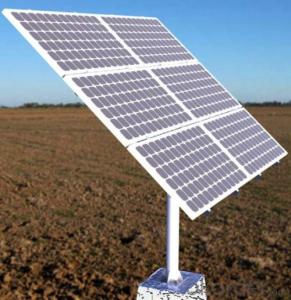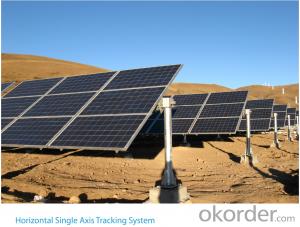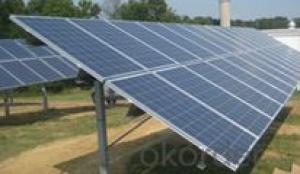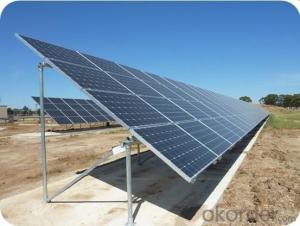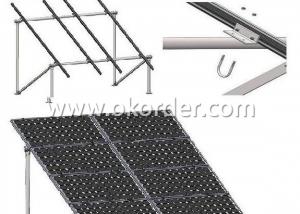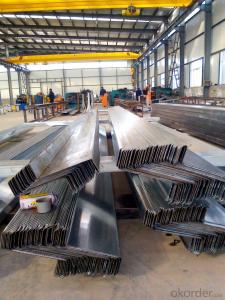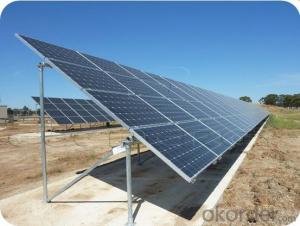Solar-Ready Concrete Roof Support System
- Loading Port:
- Shanghai
- Payment Terms:
- TT OR LC
- Min Order Qty:
- -
- Supply Capability:
- 5MWp watt/month
OKorder Service Pledge
Quality Product, Order Online Tracking, Timely Delivery
OKorder Financial Service
Credit Rating, Credit Services, Credit Purchasing
You Might Also Like
the performance features of the concreted roof support system is simple and grand appearance.exquisite stucture,easy installation.widely applied range .maintenance-free,strong wind-resistance.with the concrete ballast to keep original roof structure.With the concrete ballast to keep original roof structure.
| Installation site | Outdoor ground |
| Installation angle | customization |
| Wind resistance | 35m/s |
| Solar Panel Type | frame or frameless |
| Solar panel size | any size |
| Mount track | aluminum extrusion attachment |
| Mount materials | Q235B |
| Installation height | customization |
| Snow load | 1.4KN/m2 |
| Components arrangement | laterally or longitudinally |
| International Standards | comply with AS/NZS 1170 and other international standards |
| Quality Warranty | 20 years |
- Q: Are there any specific requirements for installing a solar mounting system on an asphalt roof?
- Yes, there are specific requirements for installing a solar mounting system on an asphalt roof. These requirements include ensuring that the roof is structurally sound and can support the weight of the solar panels, using appropriate flashing and sealants to prevent water leaks, and following local building codes and regulations. It is also important to consider the orientation and tilt of the solar panels to maximize their efficiency.
- Q: Are there any specific requirements for installing a solar mounting system on a rooftop with rooftop safety rails?
- Yes, there are specific requirements for installing a solar mounting system on a rooftop with rooftop safety rails. The mounting system needs to be compatible with the existing safety rails and should not compromise their integrity or functionality. Additionally, it is important to ensure that the solar panels are securely mounted and do not pose any safety risks to individuals accessing or working on the rooftop. Compliance with local building codes and regulations is crucial to ensure a safe and successful installation.
- Q: What is the expected maintenance cost for a solar mounting system?
- The expected maintenance cost for a solar mounting system can vary depending on factors such as the type of system, the location, and the overall condition of the equipment. However, in general, solar mounting systems are known for their low maintenance requirements. Routine inspections, cleaning, and occasional repairs may be needed, but the costs are typically minimal compared to the potential savings from using solar energy.
- Q: Can solar mounting systems be used in areas with high wind speeds?
- Yes, solar mounting systems can be used in areas with high wind speeds. However, it is crucial to choose a mounting system specifically designed and engineered to withstand the anticipated wind loads in those areas. These systems often incorporate features such as aerodynamic designs, reinforced structures, and secure anchoring to ensure stability and safety even in high wind conditions.
- Q: Can solar mounting systems be installed on buildings with limited roof weight capacity?
- Yes, solar mounting systems can be installed on buildings with limited roof weight capacity. There are lightweight and low-profile solar mounting systems available in the market that are specifically designed to minimize the added load on the roof. These systems distribute the weight of the solar panels evenly and make use of innovative installation techniques to ensure the structural integrity of the building is maintained. Additionally, a structural engineering analysis can be conducted to determine the maximum weight capacity of the roof and design a solar mounting system that complies with these requirements.
- Q: How does the hydraulic support work
- Stent used by the valve group, column, jack, are not allowed in the underground demolition inspection, the overall replacement. Replace the cylinder as far as possible before the shortest, the joints should be installed on the dust cap
- Q: How does the tilt angle of a solar mounting system affect its performance?
- The tilt angle of a solar mounting system significantly affects its performance. By adjusting the tilt angle, the solar panels can optimize their exposure to sunlight. The optimal tilt angle typically depends on the latitude of the installation site. A proper tilt angle ensures maximum solar energy absorption and increases the system's overall efficiency.
- Q: What is the most common type of solar mounting system?
- The most common type of solar mounting system is the rooftop mounting system.
- Q: Can a solar mounting system be used for solar air conditioning or HVAC systems?
- Yes, a solar mounting system can be used for solar air conditioning or HVAC systems. The solar mounting system provides a stable platform for installing the solar panels that generate electricity needed to power the air conditioning or HVAC systems. By using solar energy instead of traditional electricity, these systems become more sustainable and cost-effective.
- Q: Are there specific considerations for installing solar mounting systems in different climates?
- Yes, there are specific considerations for installing solar mounting systems in different climates. Factors such as temperature, humidity, wind speed, and snow load can vary significantly in different climates and can impact the design, installation, and performance of solar mounting systems. For example, in hot climates, it is important to consider heat dissipation and ensure proper ventilation to prevent overheating of the solar modules. In cold climates with heavy snowfall, the mounting system should be designed to withstand the weight of snow and allow for easy snow removal. Additionally, wind-resistant designs and corrosion-resistant materials may be required in coastal or high wind areas. Overall, understanding the unique characteristics of different climates is crucial for a successful and efficient solar mounting system installation.
Send your message to us
Solar-Ready Concrete Roof Support System
- Loading Port:
- Shanghai
- Payment Terms:
- TT OR LC
- Min Order Qty:
- -
- Supply Capability:
- 5MWp watt/month
OKorder Service Pledge
Quality Product, Order Online Tracking, Timely Delivery
OKorder Financial Service
Credit Rating, Credit Services, Credit Purchasing
Similar products
Hot products
Hot Searches
Related keywords

